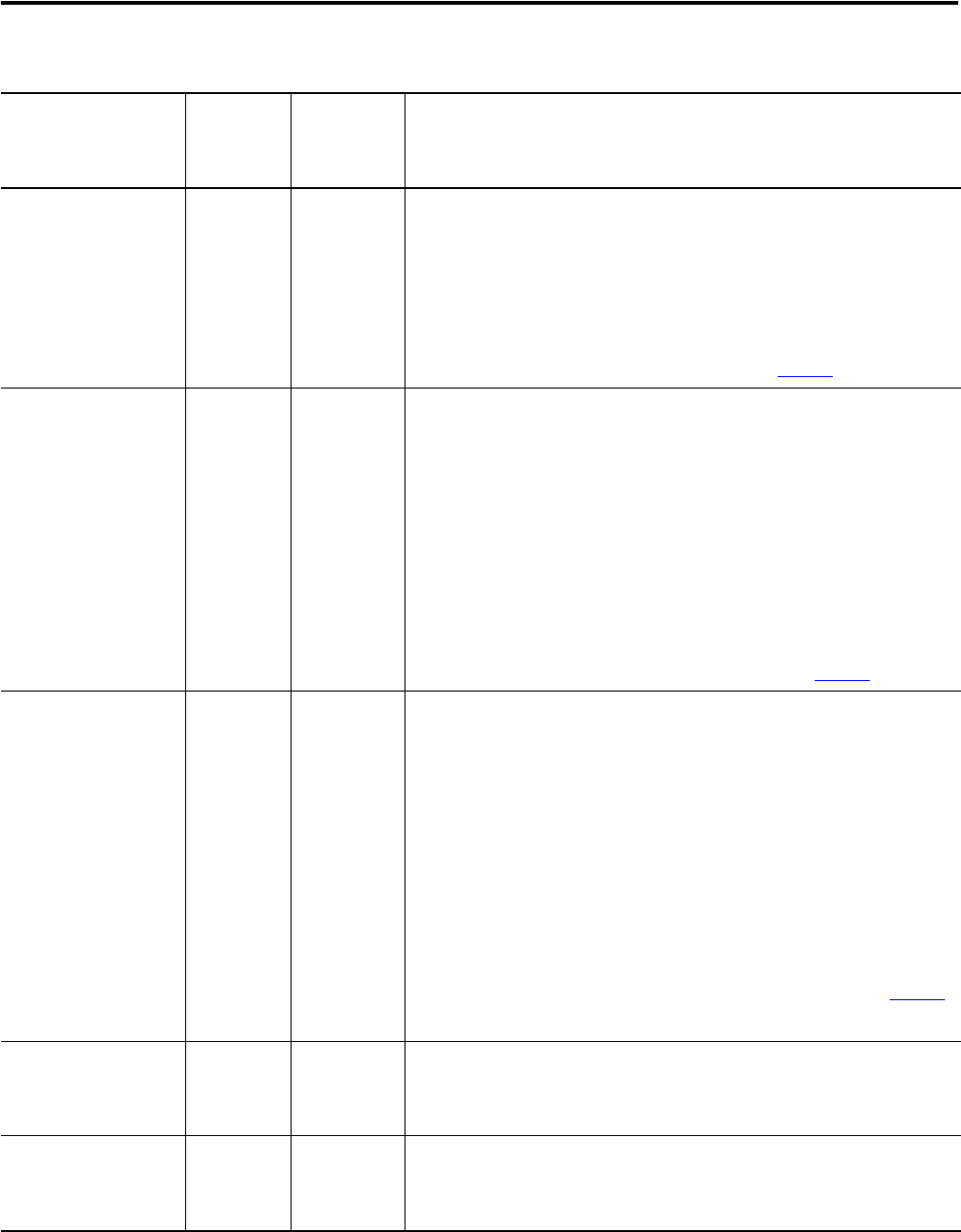supporting Sequence of Events
Table Of Contents
- 1732E-UM002A-EN-E 1732E EtherNet/IP ArmorBlock Supporting Sequence of Events User Manual
- Important User Information
- Table of Contents
- Preface
- Chapter 1 - About 1732E ArmorBlock Modules
- Chapter 2 - Module Overview
- Chapter 3 - Use the Module in an ArmorBlock System
- Chapter 4 - Install Your Module
- Chapter 5 - Configure the Module for Your EtherNet/IP Network
- Chapter 6 - Configure the Module Using RSLogix 5000
- Introduction
- Set Up the Hardware
- Create the Example Application
- Configure Your I/O Module
- Overview of the Configuration Process
- Add a New Bridge and Module to Your RSLogix 5000 Project
- Use the Default Configuration
- Change the Default Configuration
- Download Your Configuration
- Edit Your Configuration
- Access Module Data in RSLogix 5000
- Configure RSLogix 5000 and the 1756-EN2T Communication Module for CIP Sync
- Chapter Summary and What’s Next
- Chapter 7 - Module Features
- Introduction
- Determine Module Compatibility
- Module Features That Can Be Configured
- Chapter Summary and What’s Next
- Chapter 8 - Using the Module
- Chapter 9 - Interpret Status Indicators
- Chapter 10 - Troubleshoot the Module
- Appendix A - ArmorBlock 2 Port Ethernet Module Specifications
- Appendix B - Module Tags
- Appendix C - 1732E EtherNet/IP ArmorBlock Supporting Sequence of Events Data Tables
- Appendix D - Connect to Networks via Ethernet Interface
- Appendix E - 1732E ArmorBlock I/O Embedded Web Server
- Glossary
- Index
- How Are We Doing?
- Back Cover

Publication 1732E-UM002A-EN-P - March 2010
80 Module Tags
I.PtXX_YYShortCircuit BOOL Per point XX = even numbered input 0…14
YY = odd numbered input 1…15
A Short Circuit condition exists per I/O connector. For example, 00_01 or 14_15
0 = no fault
1 = short circuit
For more information on Short Circuit Protection, see page 45
.
I.NewData INT
Per point
(1)
Flag indicating if new timestamp data was detected on the input.
0 = no new timestamp data on the input
1 = new timestamp data on the input (since last acknowledged)
Because input data for all inputs is sent the next RPI after each timestamped
transition, this tag is useful to quickly determine on which input the transition
occurred. For example, if the module sends new input data to the
owner-controller and I.NewData.5 = 1, you know that at least one of the
timestamps for input 5 (I.Timestamp[5].OffOn or I.Timestamp[5].OnOff) has new
data.
This tag only clears when the controller acknowledges the new data or all
events on the module are reset. For more information, see page 64
.
I.EventOverflow INT Per point Set for an input when the module either:
• Does not timestamp a transition on the input – The module has
Timestamp Latch enabled and a similar transition has already been
timestamped on this input but has not been cleared via the O.EventAck
and O.NewDataAck output tags (see page 64).
or
• Overwrites previously-recorded timestamp data for the input – The
module has Timestamp Latch disabled and multiple transitions occur on
the input. In this case, timestamp data from new transitions are
recorded before previously-recorded transitions were cleared from the
input via the O.EventAck and O.NewDataAck output tags (see page 64
).
This value is cleared if the module is reset.
I.EventNumber.x DINT Modulewide Running count of the timestamped transitions; this tag increments by one with
each new transition that the module timestamps and rolls over to 1, not 0.
This value is cleared if the module is reset.
I.LocalClockOffset DINT[2] Modulewide The offset from the local clock to the system time. This value is useful for
detecting steps in time.
This value updates when a PTP update is received.
Input Tags
Tag Name Type Set on Per
Point or
Modulewide
basis
Description










